This artificial reef is made of pet ashes. Human ashes are next
In June 2024, a team of divers sank a curious assortment of 24 sculptures off the northern coast of Bali. The sculptures look like works of art—and in many ways they are. But they are also memorial reefs that turn cremated ashes into structures that regenerate marine life. Over the past three years, a British startup called Resting Reef has been working to revamp the death care industry. Instead of keeping ashes inside an urn (which often ends up gathering dust on a shelf) or scattering ashes at sea (a fleeting gesture that leaves no lasting trace), you can have Resting Reef integrate them into an underwater memorial that can double as an artificial reef. Now, the results are in: Nearly a year after being placed on an otherwise barren stretch of seabed in Bali, the artificial reefs have attracted more than 46 new marine species. The site now boasts four times the fish biodiversity of the nearest comparable location thanks, in part, to the turf algae and coralline algae that have grown on the surface of the reefs, providing habitat for many marine organisms. The Bali reef pilot, which was funded by six government grants from the U.K., is the only such reef in the world. (It consists of pets ashes, but reefs made with human ashes are coming next.) The team is also in conversations with sites in Plymouth, U.K., and in Mexico. “Just as we have a cemetery around the corner, in the future we’ll have memorial sites—marine sites—opening around the world,” says Aura Elena Murillo Pérez, who cofounded Resting Reefs with Louise Lenborg Skajem. [Photo: courtesy Resting Reef] Nature’s fertilizer For all our beautiful differences when we are alive, all of us are reduced to the same chemical composition when we die. The exact composition of a person’s ashes can vary based on their weight, diet, age, and genetic makeup, but most people’s chemical signature will primarily be made up of calcium phosphate. [Photo: courtesy Resting Reef] This calcium phosphate is “one of nature’s main fertilizers,” says Skajem. If you spread someone’s ashes on your lawn, excess minerals will leach into the soil, but when captured as part of the mixture that makes up a Resting Reef, it will help various species attach to the structure and grow on its now bioreceptive surface. [Photo: courtesy Resting Reef] The exact ratio of materials is part of the company’s IP, but the team is committed to working with locally available materials. In Bali, the reefs used for the pilot are made from dog and horse ashes mixed with crushed shells and volcanic sand sourced from the island. In the U.K., the company has developed a non-cementitious formula that it says is very low on carbon. [Photo: courtesy Resting Reef] Redesigning death The business of death is in dire need of a redesign. The world is running out of space to bury our dead, and cremation releases an average of 500 pounds of carbon dioxide per person into the atmosphere (the equivalent of driving your car more than 500 miles). In response to the growing crisis, a number of startups have emerged over the past decade. These include companies that use biodegradable hemp coffins, shallow graves that grow into trees, and “aquamation,” which uses alkaline hydrolysis to dissolve the body in a more environmentally friendly way. By some estimates, in 2023 the green burial market was valued at $622 million and is projected to surpass $1 billion by the end of 2030. [Photo: courtesy Resting Reef] Resting Reef slots right into this ecosystem. The company still relies on remains from cremations or aquamations, but it was founded on the premise that we can honor our dead while giving new life to marine ecosystems around the world. When I first spoke with the founders in the spring of 2022, their focus was on oyster reefs, which are among nature’s greatest carbon sinks but have been lost to overharvesting and pollution. Now the model extends to whichever habitat is most in need of restoration. On the northern coast of Bali, that is corals. The artificial reefs come in two separate designs that can each accommodate various species: One features a ribbed texture that is ideal for benthic species like oysters; the other sports crevices and tunnels that mimic coral reefs and provide shelter for mobile species like juvenile fish. In the future, the team will have a portfolio of designs depending on the ecosystem or the intended aesthetic. [Photo: courtesy Resting Reef] And it’s not just about environmental impact. Resting Reef’s business model allows the company to invest in communities by employing local restoration experts (11 locals were involved in Bali) and running classes and workshops to increase marine literacy. “Kids don’t really know about what’s happening underwater, so it’s important that they become aware because we believe that they will become the guardians of the future,” says Murillo Pérez. [Photo: courtesy Resting Reef] Going beyond death
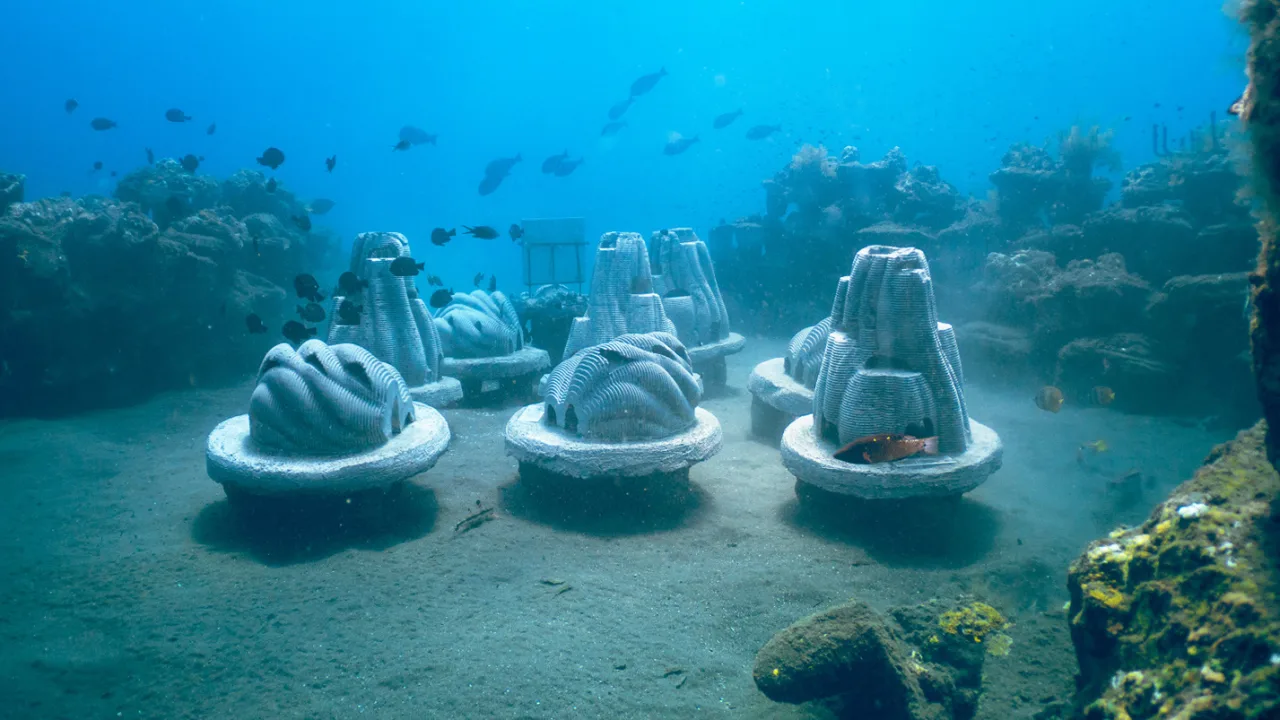
In June 2024, a team of divers sank a curious assortment of 24 sculptures off the northern coast of Bali. The sculptures look like works of art—and in many ways they are. But they are also memorial reefs that turn cremated ashes into structures that regenerate marine life.
Over the past three years, a British startup called Resting Reef has been working to revamp the death care industry. Instead of keeping ashes inside an urn (which often ends up gathering dust on a shelf) or scattering ashes at sea (a fleeting gesture that leaves no lasting trace), you can have Resting Reef integrate them into an underwater memorial that can double as an artificial reef.
Now, the results are in: Nearly a year after being placed on an otherwise barren stretch of seabed in Bali, the artificial reefs have attracted more than 46 new marine species. The site now boasts four times the fish biodiversity of the nearest comparable location thanks, in part, to the turf algae and coralline algae that have grown on the surface of the reefs, providing habitat for many marine organisms.
The Bali reef pilot, which was funded by six government grants from the U.K., is the only such reef in the world. (It consists of pets ashes, but reefs made with human ashes are coming next.) The team is also in conversations with sites in Plymouth, U.K., and in Mexico. “Just as we have a cemetery around the corner, in the future we’ll have memorial sites—marine sites—opening around the world,” says Aura Elena Murillo Pérez, who cofounded Resting Reefs with Louise Lenborg Skajem.
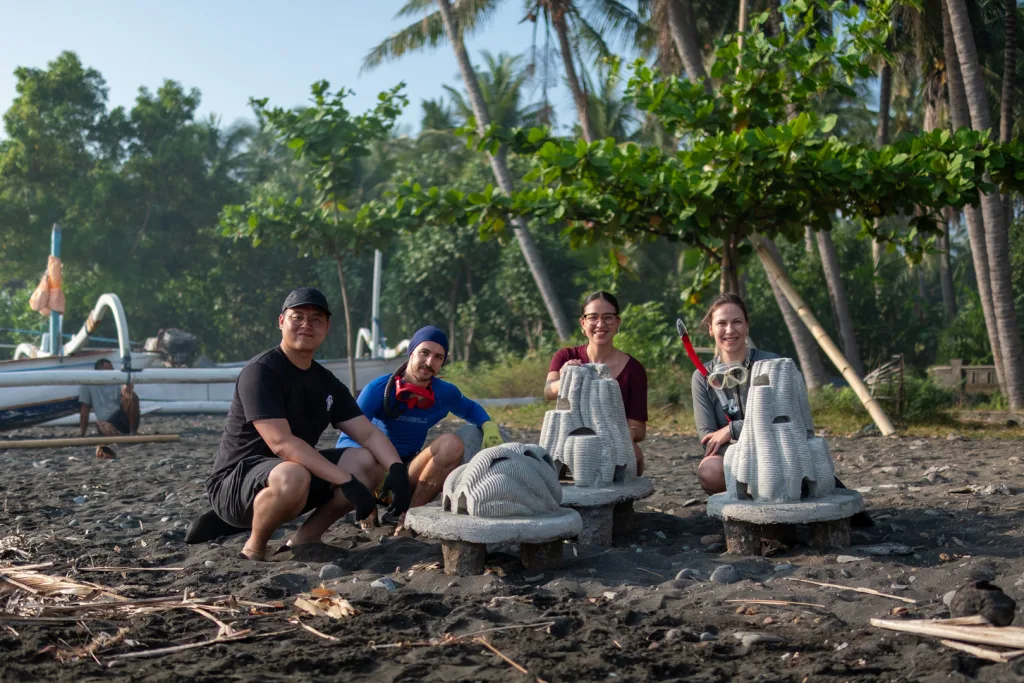
Nature’s fertilizer
For all our beautiful differences when we are alive, all of us are reduced to the same chemical composition when we die. The exact composition of a person’s ashes can vary based on their weight, diet, age, and genetic makeup, but most people’s chemical signature will primarily be made up of calcium phosphate.
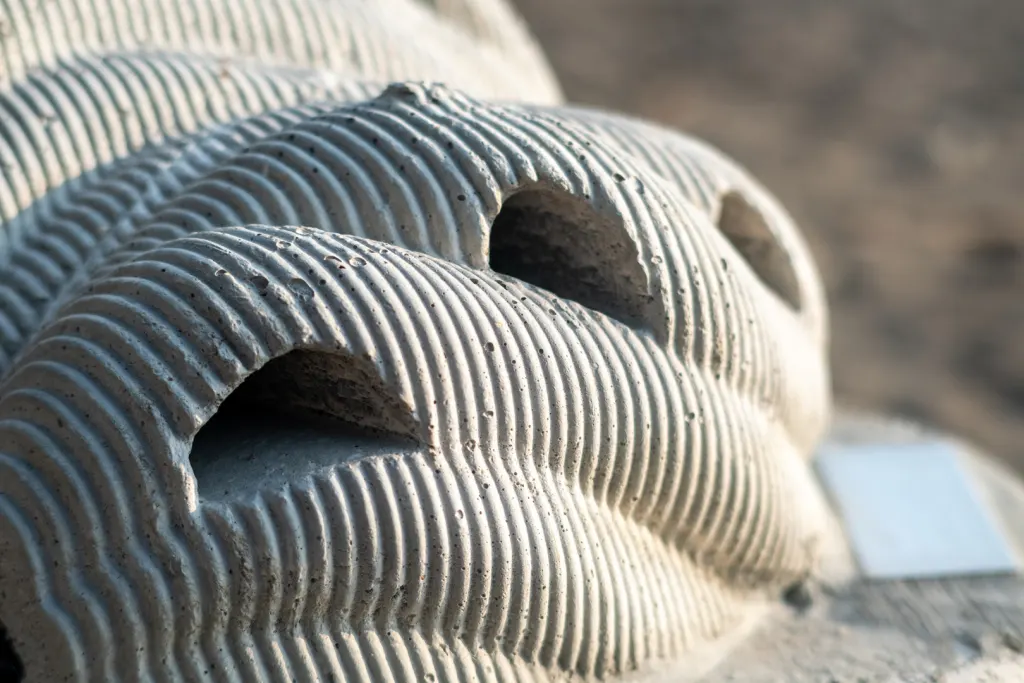
This calcium phosphate is “one of nature’s main fertilizers,” says Skajem. If you spread someone’s ashes on your lawn, excess minerals will leach into the soil, but when captured as part of the mixture that makes up a Resting Reef, it will help various species attach to the structure and grow on its now bioreceptive surface.
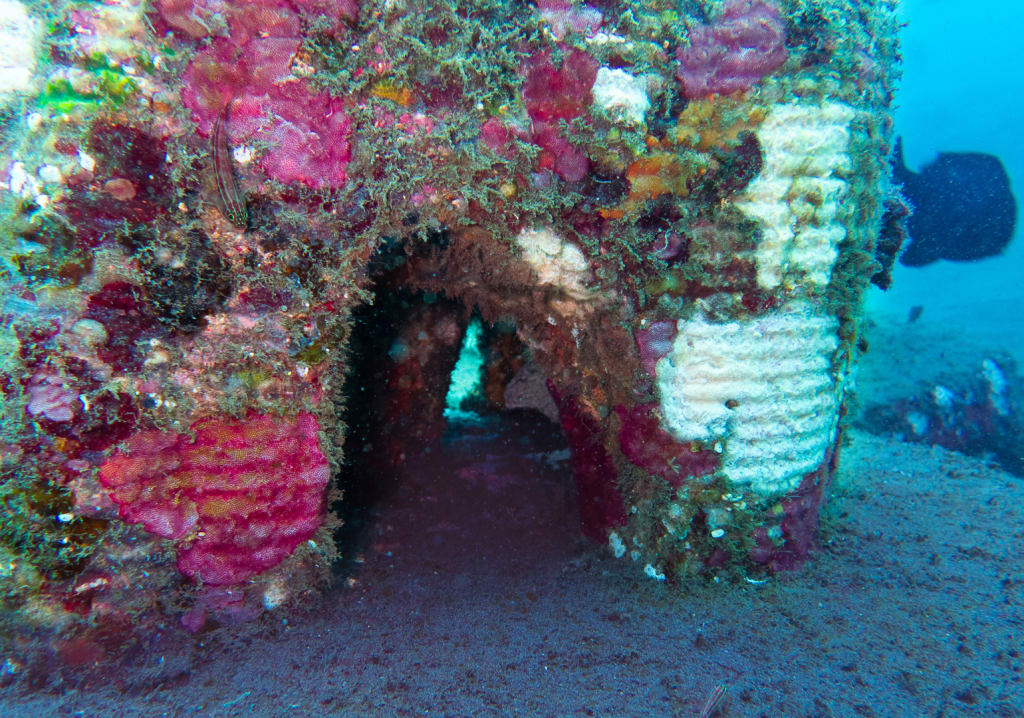
The exact ratio of materials is part of the company’s IP, but the team is committed to working with locally available materials. In Bali, the reefs used for the pilot are made from dog and horse ashes mixed with crushed shells and volcanic sand sourced from the island. In the U.K., the company has developed a non-cementitious formula that it says is very low on carbon.
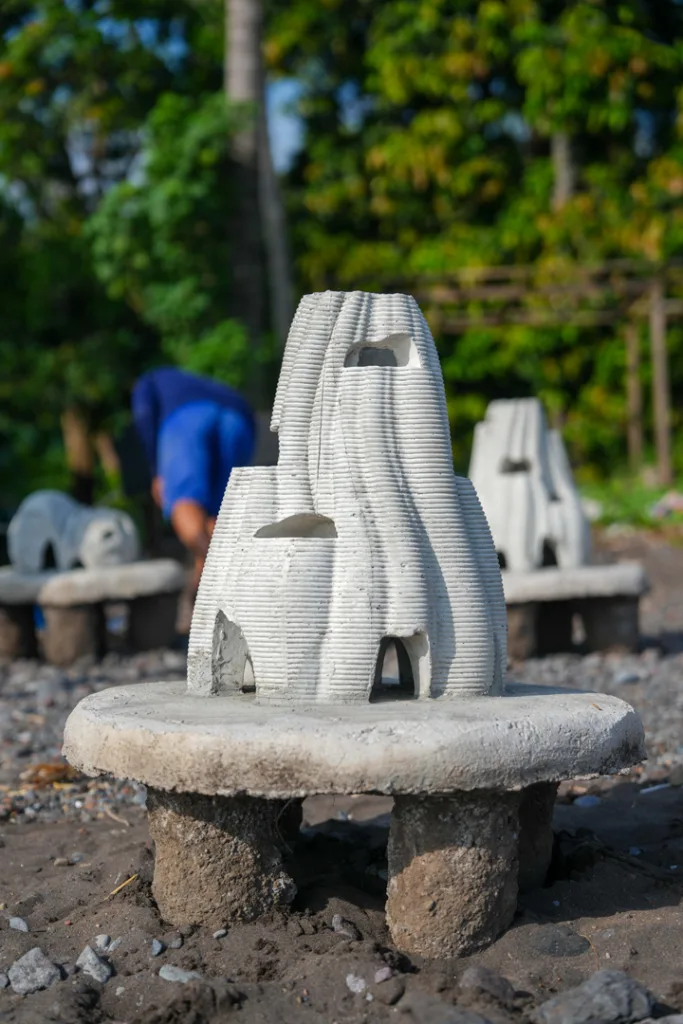
Redesigning death
The business of death is in dire need of a redesign. The world is running out of space to bury our dead, and cremation releases an average of 500 pounds of carbon dioxide per person into the atmosphere (the equivalent of driving your car more than 500 miles).
In response to the growing crisis, a number of startups have emerged over the past decade. These include companies that use biodegradable hemp coffins, shallow graves that grow into trees, and “aquamation,” which uses alkaline hydrolysis to dissolve the body in a more environmentally friendly way. By some estimates, in 2023 the green burial market was valued at $622 million and is projected to surpass $1 billion by the end of 2030.

Resting Reef slots right into this ecosystem. The company still relies on remains from cremations or aquamations, but it was founded on the premise that we can honor our dead while giving new life to marine ecosystems around the world. When I first spoke with the founders in the spring of 2022, their focus was on oyster reefs, which are among nature’s greatest carbon sinks but have been lost to overharvesting and pollution. Now the model extends to whichever habitat is most in need of restoration. On the northern coast of Bali, that is corals.
The artificial reefs come in two separate designs that can each accommodate various species: One features a ribbed texture that is ideal for benthic species like oysters; the other sports crevices and tunnels that mimic coral reefs and provide shelter for mobile species like juvenile fish. In the future, the team will have a portfolio of designs depending on the ecosystem or the intended aesthetic.
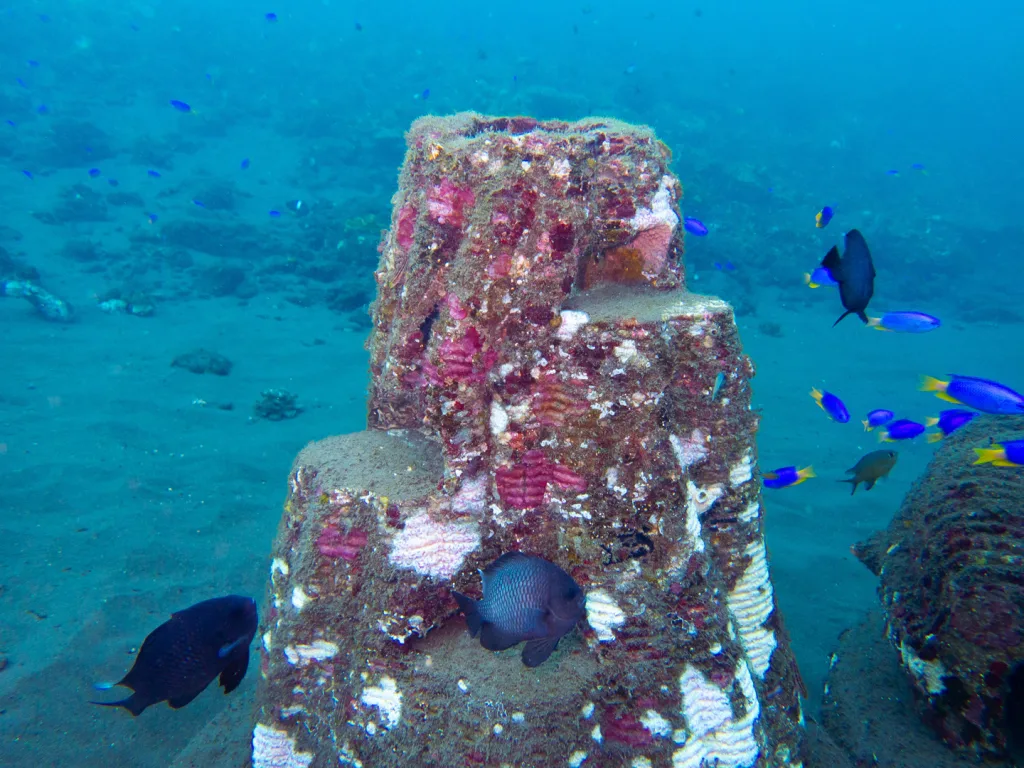
And it’s not just about environmental impact. Resting Reef’s business model allows the company to invest in communities by employing local restoration experts (11 locals were involved in Bali) and running classes and workshops to increase marine literacy. “Kids don’t really know about what’s happening underwater, so it’s important that they become aware because we believe that they will become the guardians of the future,” says Murillo Pérez.

Going beyond death
More than a marine regeneration initiative, Resting Reef bills itself as a sustainable death care service that helps people build a meaningful legacy for themselves or their loved ones. Both Murillo Pérez and Skajem are certified funeral celebrants, which allows them to officiate funeral services and support families through bereavement.
The 24 memorials that are currently underwater in Bali are all part of a community memorial for various pets (a spot in a Community Reef begins at $470, while a dedicated reef for your pet will cost you about $3,000).
The pet memorial served as a useful pilot, but this summer Resting Reef will expand by launching its first memorial service for humans. The price of a dedicated memorial made with human ashes will begin at $5,200, which is cheaper than the average cost of a basic funeral in the United States. As of 2023, that was $6,280 for cremation and $8,300 for burial.
The team will ask you to send the ashes by post, but some countries have a limit to the amount of human ashes you can send by mail. (The Royal Mail in the U.K. caps it at 50 grams.) So Resting Reef is considering other options, like collecting ashes from various funeral homes that could act as partners. For those who want to have a memorial ceremony and see the reef in person, the team offers a bespoke package called Experiential Reef.
As part of the service, regardless of the tier, the team will send you a miniature version of your reef that you can keep close to you. You can opt in to have a portion of the ashes incorporated in the miniature sculpture, “because some people have difficulties letting go of the ashes,” says Skajem. And if you don’t, you still have a tangible object to remember your loved one by.
Whether the distance turns out to be an issue remains to be seen, but to help people feel more connected, the team also sends regular updates in the form of impact reports—both environmental and social—and footage of the reef as it evolves. As Skajem puts it: “That’s part of the legacy.”






































































































![Building A Digital PR Strategy: 10 Essential Steps for Beginners [With Examples]](https://buzzsumo.com/wp-content/uploads/2023/09/Building-A-Digital-PR-Strategy-10-Essential-Steps-for-Beginners-With-Examples-bblog-masthead.jpg)




















































